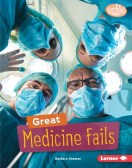 Did you know that the ‘S’ in Summer stands for Science? Okay, maybe it doesn’t, but we here at STEM Tuesday think that it should!
Did you know that the ‘S’ in Summer stands for Science? Okay, maybe it doesn’t, but we here at STEM Tuesday think that it should!
So when you have days where your kids are wondering what to do or ask tons of questions about how things work, dive into our archives. We have posts on practically every STEM topic (and if we don’t have a topic you want, leave us a comment to suggest it). We have TONS of ways to keep your kids engaged, excited, and inspired about all things STEM/STEAM. After all, science is all around you.
Just go to our home page HERE and use the drop down menu to search for the topic you want.

Click on the tab indicated by the red arrow above. There are SO MANY topics to choose from.
Here are just a few to get you started.
ACTIVITIES with ANIMALS
Have kids that love BIRDS? Check out this post HERE about How to Build a Birdhouse, Make a Bird Feeder and even start a Bird Journal by Janet Slingerland Hammond has LOTS of great stuff for current or future birders
If your kids love elephants and want to learn more, you won’t want to miss this interview with author Patricia Newman about her Eavesdropping on Elephants book. This interview by Mary Kay Carson is sure to get kids interested. You can even have them listen to Elephant sounds at the Elephant Listening Project HERE
OR if your kids want to experience what it’s like to be a REAL scientist and do some Field Work, check out this post by Heather L. Montgomery about creating your own Field Journal. It’s SO COOL!
And of course, don’t miss the awesome list about Books that relate to Field Work. Download and take it with you to your next library outing. Nancy Castaldo and Patricia Newman did a great job compiling this extensive list
FUN with Exploration!
Perhaps your child is interested in learning more about how humans explore the universe. All types of exploration– from the depths of the ocean to the extreme regions of space (and everything in between)– is found in our fun topics!
Start out with this great list of Exploration books here
Then move to this post by Carolyn DeCristofano which gives tips for kids to explore on their own.
Want to learn more about women in space? Check out this awesome interview post by Christine Taylor Butler with author Tanya Lee Stone and her book Almost Astronauts: 12 Women Who Dared to Dream.
Learn about the teams of scientists and engineers that make space travel possible from this post by Mike Hays.
Exploration is not just space and the ocean, but also dinosaurs and fossils. Check out this awesome book list by Sue Heavenrich and Maria Marshall for books all about paleontology and archaeology.
Karen Latchana Kenney has a FABULOUS post with activities for that junior paleontologist in your house!
Diversity in STEM/STEAM
STEM/STEAM works best when people of all backgrounds contribute and collaborate on projects. A good knowledge of just how important it is for everyone to participate in STEM is a great reminder to all of us. Take a look at some of these posts to see how that happens.
Kirsten W. Larson does a great job of showing us the author’s purpose in writing a book about STEM/STEAM in this post. What were they really thinking? What point of view were they trying to get across? This is a great discussion for a rainy day or dinner table activity.
Looking for fun activities to do with STEM books that highlight diversity? Carla Mooney has a wonderful list of activities in this post
And don’t miss this fantastic interview by Mary Kay Carson with Catherine Thimmesh, author of Girls Think Of Everything
Stories of Ingenious Inventions by Women
And finally, where would STEM/STEAM be without an Epic Achiement or Fantastic Failure?
Kids of all ages need to understand that regardless of whether you succeed or “fail”, in STEM/STEAM its all about the process and learning from your outcome.
Take a look at this post by me (Jennifer Swanson) where I discuss one of my most epic failures in my career and how I learned from it. Use this as a discussion topic for your dinner table or just to have fun with your kids to see what they have learned from their mistakes.
THERE IS SO MUCH MORE ON THE STEM TUESDAY SITE!
Take a look. If you don’t see a topic you’re interested in, let us know. Leave a comment below or send us an email at stemmuf@gmail.com
Have a GREAT SUMMER!
************************************************************************************************************************
 Jennifer Swanson is the award-winning author of over 35 books for kids, mostly about science, technology, and engineering. She loves learning new things but still cannot make a plate of agar correctly the first time. But she keeps trying! You can find her at www. JenniferSwansonBooks.com Check out her awesome podcast for kids Solve It for Kids! www.solveitforkids.com
Jennifer Swanson is the award-winning author of over 35 books for kids, mostly about science, technology, and engineering. She loves learning new things but still cannot make a plate of agar correctly the first time. But she keeps trying! You can find her at www. JenniferSwansonBooks.com Check out her awesome podcast for kids Solve It for Kids! www.solveitforkids.com



















 Your host is
Your host is